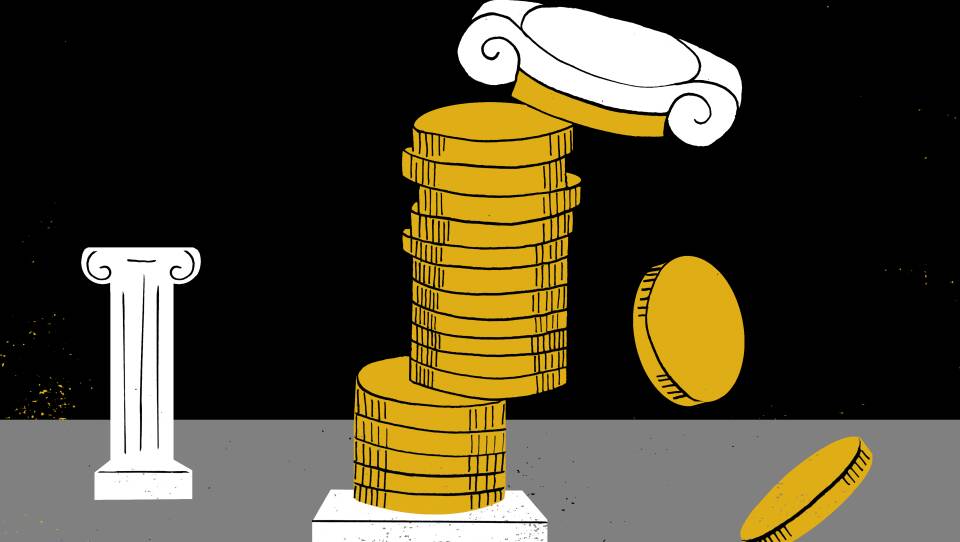President Trump's full budget proposal for fiscal year 2018, to be released Tuesday, calls for a $9.2 billion, or 13.5 percent, spending cut to education. The cuts would be spread across K-12 and aid to higher education, according to documents released by the White House.
None of this can be finalized without Congress. And the political track record for Presidents who want to reduce education funding is not promising, even in a far less poisoned atmosphere than the one that hovers over Washington right now.
Student loans
This proposal calls for big changes to federal student aid:
- The federal government would stop subsidizing the interest on student loans, for a cut of $1 billion in the next fiscal year. This would add thousands of dollars to the cost of college, primarily for low-income graduates.
- Simplifying student loan repayment plans — a proposal that enjoys broad, bipartisan support. Currently, borrowers have a dizzying array ofoptions:standard repayment (a 10-year term), graduated, extended, pay-as-you-earn, income-based, income-contingent and public service loan forgiveness. Trump's budget would create just one repayment plan that caps monthly payments at 12.5 percent of discretionary income. For undergraduate borrowers, the balance would be forgiven after 15 years.
- In the process of that simplification, the budget would phase out the program known as public service loan forgiveness, which erases student loans after 10 years of employment for the government or a qualifying nonprofit. Almost half a million people are enrolled in this program. Those with graduate, not bachelor's, degrees, have the largest balances, such as teachers, doctors and lawyers.
It's not yet clear whether the program would be sunset or canceled immediately. The first group of participants was set to have their loans forgiven this coming October.
Another proposal in this budget with broad support: making Pell Grants, which provide tuition aid for low-income students, available year-round. Currently you can only get one in the fall and one in the spring.
Lauren Asher is a college affordability advocate with the Institute for College Access and Success. That group has supported simplifying student loan repayment. However, she says, all told, this budget amounts to, "multiple cuts that will exacerbate student debt by increasing the need to borrow, and increase the cost of repayment for many but not all students."
Medicaid
This budget calls for major cuts to Medicaid. This would affect public schools and students in several ways. For both special-needs students, as well as millions of poor students, public schools provide services, from vision screening to speech therapy, to the tune of $4 billion in reimbursements a year, or 1 percent of all Medicaid dollars.
"It does represent quite a bit of money for schools and it's significant for them in terms of what they're able to use it for," says Jessica Schubel of the left-leaning Center on Budget and Policy Priorities.
School choice
Title I is the biggest K-12 federal education program. It supports high-poverty schools. Under Trump's budget, regular Title I funding would be flat. And $1 billion more would be dedicated to a new grant program for states that allow poor students to leave neighborhood schools for other public schools, and take that extra money with them. This concept is known as "portability," or as it's sometimes known, the "backpack of cash" idea.
It's controversial, because in practice it means redistributing fundsfrom poorer schools and potentially poorer districts to richer ones.
In addition, $250 million would go to create vouchers for private schools, and $167 million for charter schools.
The administration is also expected to unveil — outside this budget process — a tax credit scholarship program (sometimes called neo-vouchers), as part of tax reform.
Cuts
Some of the biggest axes would fall on a $2.3 billion program for teacher training and class-size reduction, and a $1.2 billion after-school program, which serves nearly 2 million children, many of them poor.
A $190 million literacy program would also be cut.
What are the chances?
We should note that, though this document has more details than the "budget blueprint" released earlier, nothing becomes law until it passes through Congress.
If history is any guide, budget reductions won't be so extreme.
The Department of Education was established under President Jimmy Carter. Ronald Reagan is the only president since then to seek a significant cut in its budget.
In fact, Reagan campaigned on a proposal to eliminate the department altogether. Once elected, his initial budget proposal asked for cuts of 20 to 25 percent in elementary and secondary education, among other programs.
Copyright 2017 NPR. To see more, visit http://www.npr.org/.




